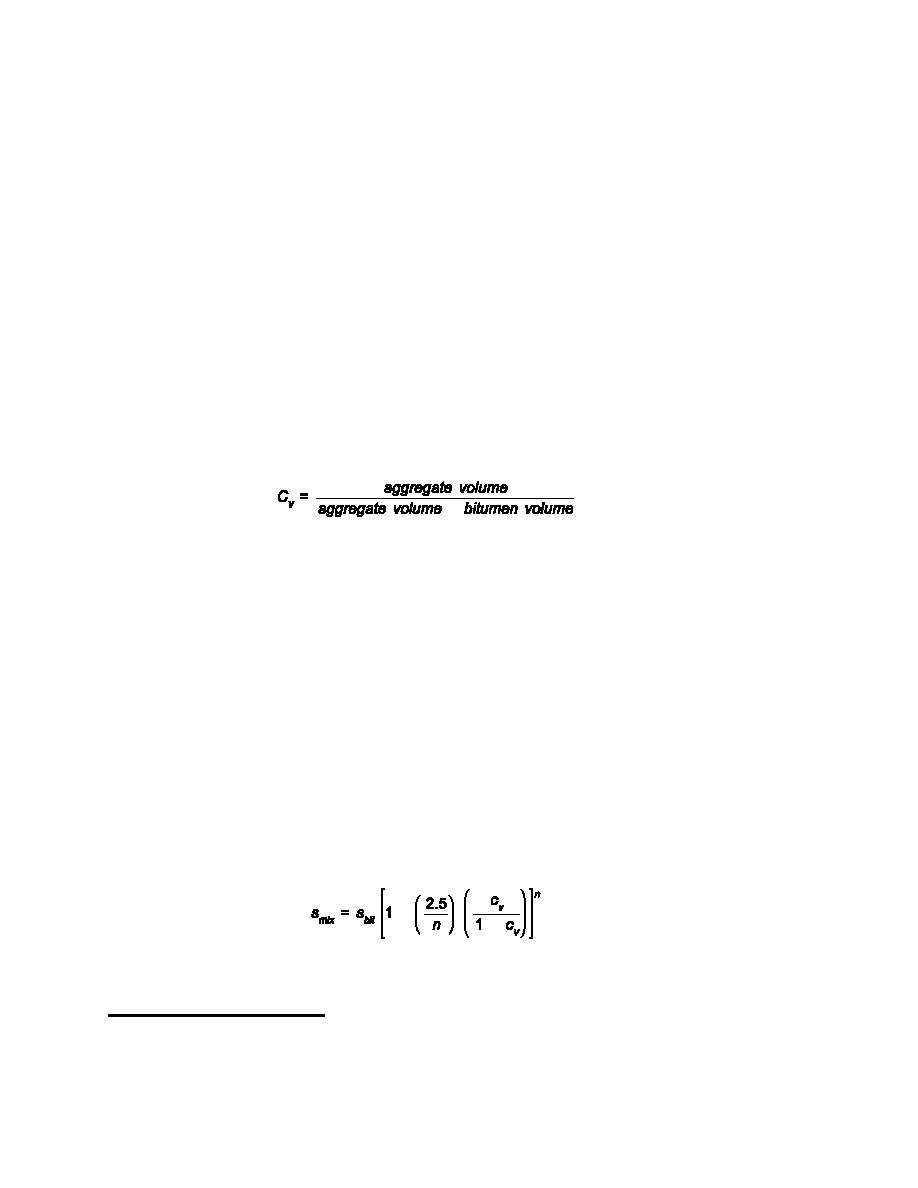
UFC 3-260-02
30 June 2001
APPENDIX I
PROCEDURE FOR ESTIMATING THE MODULUS OF ELASTICITY
OF BITUMINOUS CONCRETE
I-1. GENERAL. The procedure for estimating the modulus of elasticity of bituminous concrete
presented here is based on relationships developed by Shell.1 Parameters needed for input into this
method are:
a. Ring-and-ball softening point in degrees Celsius (degrees Fahrenheit) of the bituminous
material used in the mix in accordance with ASTM D 36.
b. Penetration of the bituminous material, in 1/10 millimeters in accordance with ASTM D 5.
c. Volume concentration of the aggregate Cv used in the mix defined by
(I-1)
%
I-2. STEPS OF PROCEDURE. The steps in using this method are as follows:
a. Penetration Index. With known values of penetration and ring-and-ball softening point,
enter Figure I-1 and determine the penetration index PI.
b. Stiffness Modulus. The next step involves the use of the nomograph presented in
Figure H-2. In addition to the PI, two other values are required: the temperature of the bituminous
concrete mix for which the modulus value is desired and the estimated loading frequency or time of
loading to which the prototype pavement will be subjected. Use of a loading frequency of 2 hertz
is recommended for taxiway design and 10 hertz for runway design. With values for the loading
frequency and the difference in temperature between the bituminous concrete and the ring-and-ball
softening point, a stiffness value for the bitumen Sbit can be determined from the appropriate PI line
at the top of the nomograph. The value of Sbit is then used to determine the modulus of the mix
Smix.
c. Determining Modulus of Mix Smix. A value for Smix may be determined by
(I-2)
%
&
1
Heukelom, W., and Klomp, A. J. G. (1964). "Road Design and Dynamic Loading." Proceedings,
Association of Asphalt Paving Technologists. Vol 33, 92-125.
I-1



 Previous Page
Previous Page
